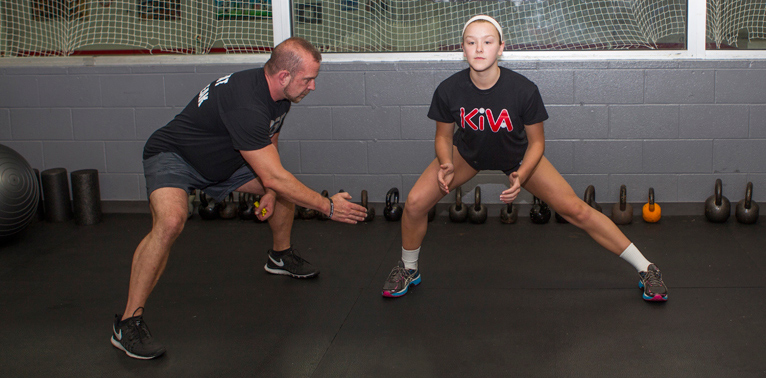Volleyball Magazine have a couple of interesting free items on their web site this month:
Preserve Your ACL & Accelerate Performance
 To produce players who stop balls from dropping on defense, jump out of the gym on offense, and stay injury-free throughout the season, a volleyball training system must contain elements for both athletic performance and injury prevention. Performance training for volleyball players should include vertical-jump development, foot-quickness exercises, and lateral movement. Injury prevention should cover several areas that commonly cause problems, but the most noted issue for female athletes is ACL injuries. ACL-protective training includes correcting quadriceps-to-hamstring strength ratios, teaching force absorption, grooving neural patterns that correct valgus knee (the caving in of the knees when squatting, jumping, and landing), and developing strong postural lines so the shoulders stay over the hips.
To produce players who stop balls from dropping on defense, jump out of the gym on offense, and stay injury-free throughout the season, a volleyball training system must contain elements for both athletic performance and injury prevention. Performance training for volleyball players should include vertical-jump development, foot-quickness exercises, and lateral movement. Injury prevention should cover several areas that commonly cause problems, but the most noted issue for female athletes is ACL injuries. ACL-protective training includes correcting quadriceps-to-hamstring strength ratios, teaching force absorption, grooving neural patterns that correct valgus knee (the caving in of the knees when squatting, jumping, and landing), and developing strong postural lines so the shoulders stay over the hips.
Full item at:
http://volleyballmag.com/articles/43448-preserve-your-acl-accelerate-performance
Solving the Split Block Dilemma
 When my partner and I are split-blocking, how do we decide who will block during the play?
When my partner and I are split-blocking, how do we decide who will block during the play?
Lauren Fendrick: Typically within a match one blocker/defender combination will be more effective against a particular opponent. If that is the case, then you should decide beforehand to use your more effective defense as much as possible. You can also decide during the play, but as with most things in beach volleyball, communication is key. You can also have set rules, like always have the attacker stay at the net and block and the setter retreat to defense. Or you can consider tendencies. If your team is pulling a lot and the attacker tends to hit toward the puller, you can put your better transition-attacker at the net in hopes of getting a chance to pull, get a dig, and smash down a transition set.
Full item at: http://volleyballmag.com/articles/43444-ask-the-pro-lauren-fendrick
